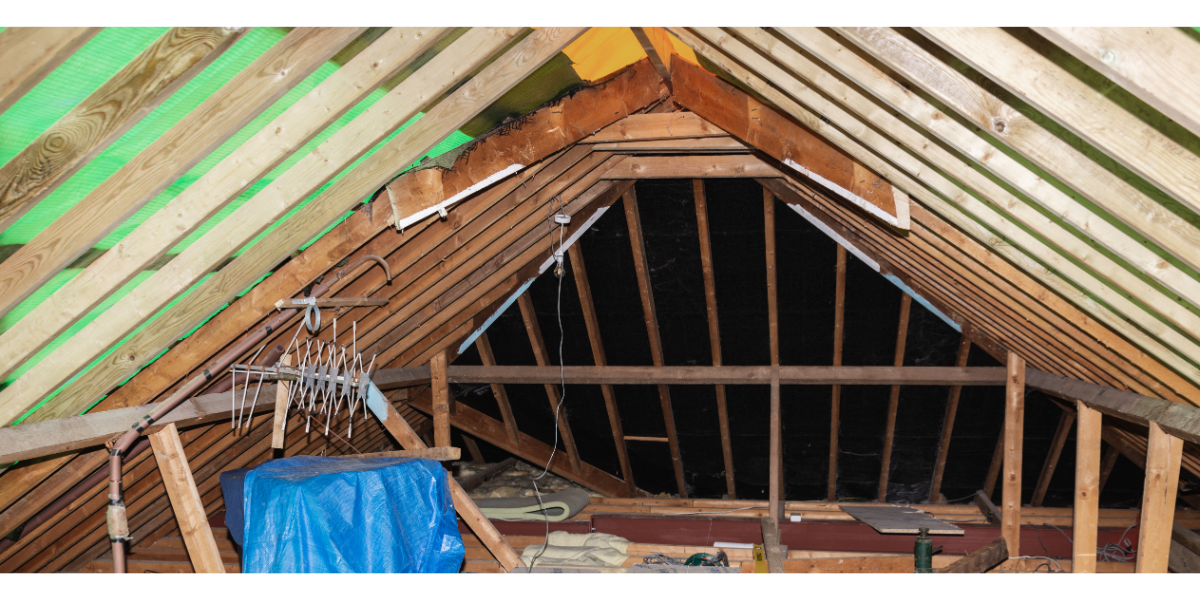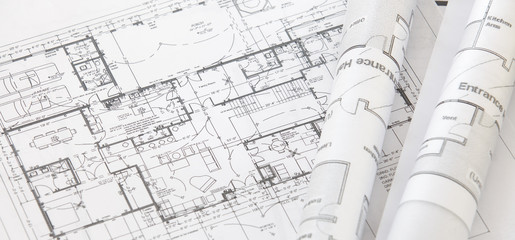Informing Neighbours About Loft Conversion Plans
Informing neighbours about your loft conversion plans is an important step in this process. While you may not always need permission from your neighbours, it is essential to maintain good relations and follow proper etiquette. This article will guide you on how to inform your neighbours about your loft conversion plans and the significance of neighbourly consultation during home renovations.
Undertaking a loft conversion is a popular choice for homeowners looking to maximize their living space. Whether you’re planning to create an extra bedroom, a home office, or a playroom, involving your neighbours in the process can help ensure a smooth and harmonious renovation journey.

Key Takeaways:
- Informing neighbours about loft conversion plans is important for maintaining good relations and following proper etiquette.
- Neighbourly consultation is crucial during home renovations to avoid potential conflicts and disputes.
- Understanding the Party Wall Act and obtaining a party wall agreement may be necessary for loft conversions involving shared walls.
- Effective communication and neighbourly courtesy play a significant role in ensuring a smooth renovation process.
- Determining whether planning permission is required and navigating loft conversion regulations is essential.
Understanding the Party Wall Agreement in Loft Conversions
Under the Party Wall Act 1996, if your loft conversion involves structural alterations to a shared wall with your neighbours, you will need to adhere to certain regulations. This section explores the details of the Party Wall Act, including neighbours’ rights, the requirement for a party wall notice, and the significance of structural alterations in loft conversions.
What the Party Wall Act 1996 Entails
The Party Wall Act 1996 is legislation designed to address potential disputes between neighbours that arise due to building work. It applies to various types of works, including loft conversions, which involve structural alterations to party walls or shared walls between adjoining properties. The act aims to balance the rights and responsibilities of property owners, ensuring that any building work does not negatively impact the stability or integrity of adjoining properties.
The Party Wall Act outlines the following key points:
- Notification: Before commencing any building work that affects the party wall, you must serve a party wall notice to your neighbours. This notice should include details of the proposed work, the expected start date, and any plans or specifications.
- Neighbours’ Rights: Once you have served the party wall notice, your neighbours have the right to consent to the proposed works, dissent, or agree to the appointment of a party wall surveyor to resolve any potential disputes.
- Party Wall Agreement: If your neighbours dissent or there are unresolved disputes, you will need to enter into a party wall agreement. This legally binding document sets out the rights and responsibilities of all parties involved and ensures that the necessary measures are taken to protect the shared walls and adjoining properties.

Structural Alterations and Neighbours’ Rights
When carrying out a loft conversion that requires structural alterations to the shared wall, it is crucial to consider the rights of your neighbours. These rights include:
- The right to be notified: You must inform your neighbours about the intended structural alterations and provide them with sufficient details about the proposed work.
- The right to give consent or dissent: Neighbours have the right to either consent to the proposed alterations or dissent and seek proper measures for protecting their property.
- The right to appoint a party wall surveyor: If your neighbours dissent, they have the right to appoint their own party wall surveyor, who will act independently to resolve disputes and protect their interests.
By understanding and respecting these rights, you can maintain good relations with your neighbours throughout the loft conversion process.
Put yourself in your neighbour’s shoes, I’m sure you would appreciate the same courtesy ;0
Party Wall Notice: A Requirement for Shared Walls
A party wall notice is a legal requirement under the Party Wall Act when carrying out loft conversions that involve shared walls. This notice serves as a formal communication to your neighbours, providing them with information about the proposed work and giving them the opportunity to exercise their rights.
Party wall agreements are required in England but they are not required in Scotland.
The party wall notice should include:
- Details of the proposed work: Clearly explain the nature and extent of the structural alterations that are planned for the loft conversion.
- Start date and duration: Inform your neighbours of the anticipated start date and the estimated duration of the building work.
- Relevant plans and specifications: Attach any necessary plans or specifications that illustrate the proposed alterations and highlight how they may affect the party wall.
By issuing a party wall notice to your neighbours, you demonstrate transparency and provide them with the opportunity to protect their property and address any concerns they may have.
Understanding the Party Wall Act, neighbours’ rights, and the requirement for a party wall notice is vital when undertaking loft conversions involving shared walls. It ensures that you comply with legal obligations, maintain positive neighbourly relations, and protect the structural integrity of adjoining properties.
The Significance of Neighbourly Consultation During Home Renovations
Maintaining good relations with your neighbours is crucial when undergoing home renovations, including loft conversions. By engaging in neighbourly consultation, you can foster a positive environment and avoid potential disputes that may arise during the renovation process.
Maintaining Good Relations and Neighbour Disputes
Neighbour disputes can significantly hinder the progress of your home renovations and cause unnecessary stress. However, by proactively involving your neighbours in the planning process, you can build positive relationships and address any concerns they may have.
Here are some tips to help maintain good relations and handle potential neighbour disputes:
- Inform your neighbours about your loft conversion plans early on in the process. This shows respect and gives them time to voice any concerns before the construction begins.
- Be considerate of your neighbours’ schedules and daily routines. Let them know in advance if there will be any disruptions, such as construction noise or temporary changes to access routes.
- Address any complaints or issues promptly and respectfully. Open lines of communication and strive for a mutually satisfactory resolution.
- If necessary, seek mediation or arbitration to help resolve any conflicts that may arise during the renovation process.
By maintaining good relations and handling neighbour disputes effectively, you can create a harmonious environment that benefits both you and your neighbours throughout the home renovation process.
Effective Communication and Neighbourly Courtesy
Effective communication is key to neighbourly consultation during home renovations. Open and transparent communication helps alleviate concerns, promotes understanding, and ensures that your neighbours feel valued and respected.
Consider the following tips for effective communication and neighbourly courtesy:
- Initiate open and friendly conversations with your neighbours about your loft conversion plans. This will foster a positive and collaborative atmosphere.
- Listen attentively to your neighbours’ concerns and address them sincerely. Consider their input and find common ground for resolutions.
- Keep your neighbours informed about the project’s progress and any changes that may arise. Regular updates help alleviate uncertainties and maintain transparency.
- Show neighbourly courtesy throughout the renovation process. Inform your neighbours about any potential disruptions, such as construction noise or limited parking, and find ways to minimize the impact on their daily lives.
- Express gratitude for your neighbours’ understanding and cooperation. A simple thank you goes a long way in maintaining positive relationships.
By practicing effective communication and demonstrating neighbourly courtesy, you can establish a cooperative and respectful environment during your home renovations.

Do I Need to Tell Neighbours About My Loft Conversion?
When embarking on a loft conversion project, it is important to consider whether or not you need to inform your neighbours about your plans. While it may not always be a legal requirement, informing your neighbours is a courteous and considerate approach, especially if your project involves structural changes or shared walls.
By engaging your neighbours in the planning process, you can maintain positive relationships and address any concerns they may have. Open communication and neighbour notification can help prevent potential disputes and foster a sense of community.
If your loft conversion requires planning permission, it is advisable to inform your neighbours as part of the planning process. Planning permission itself may include a requirement for neighbour notification, ensuring that adjacent properties are aware of the proposed changes.
Neighbour notification serves several purposes, including:
- Respecting the privacy of neighbours and their right to be informed about potential disruptions
- Providing an opportunity for neighbours to raise any concerns or objections
- Promoting a sense of collaboration and cooperation within the community
In addition to being considerate and community-minded, notifying neighbours about your loft conversion plans can also help you avoid potential legal issues in the future. By involving your neighbours early on, you can address any concerns and ensure that your project complies with any relevant regulations or restrictions.
Ultimately, while you may not always be legally obligated to inform your neighbours about your loft conversion, doing so demonstrates respect and consideration for those who live in close proximity to your property. It can contribute to a harmonious neighbourhood and a smoother renovation process.
So, whether you’re embarking on a loft conversion or considering other home renovations, take the time to consider your neighbours and the benefits of neighbour notification. By keeping the lines of communication open and engaging in neighbourly consultation, you can foster positive relationships and ensure a successful project.

Determining Whether Planning Permission is Required
Before embarking on a loft conversion project, it is crucial to understand the regulations surrounding planning permission. In the United Kingdom, certain loft conversions may be carried out under permitted development rights, eliminating the need for planning permission. However, it is important to thoroughly research and consider the specific loft conversion regulations in your area to ensure compliance with building control requirements.
Permitted Development Rights and Loft Extensions
Permitted development rights allow homeowners to make certain changes to their properties without seeking explicit planning permission. This includes specific types of loft extensions that meet certain criteria. These criteria typically relate to factors such as the size of the extension, the overall height of the roof, and the materials used. However, it’s important to note that permitted development rights can vary between different local authorities and may be subject to specific conditions or limitations.
If your loft conversion plans fall within the scope of permitted development rights, you can proceed without formal planning permission. However, it is still advisable to consult with your local planning authority or a professional architect to confirm that your project meets the necessary requirements and to obtain any relevant documentation.
Loft Conversion Regulations: Navigating Building Control
Even if your loft extension falls within permitted development rights, it is crucial to navigate building control regulations. These regulations ensure that the construction work complies with safety and structural requirements. Building control regulations cover various aspects, including fire safety, insulation, ventilation, and structural stability. Compliance with these regulations is essential to ensure the safety and longevity of your loft conversion.
When undertaking a loft conversion, it is advisable to work with a professional architect or builder who is familiar with loft conversion regulations and building control requirements. They can help navigate the process and ensure that all necessary approvals and inspections are carried out. Engaging professionals with expertise in loft conversions will not only help you comply with the relevant regulations but also ensure the quality and success of your project.
By understanding the permitted development rights and loft conversion regulations, you can determine whether planning permission is required for your loft conversion project. Proper compliance with building control regulations is crucial for the safety and successful completion of your loft extension.

The Process of Notifying Neighbours About Loft Conversion Plans
This section outlines the process of notifying neighbours about your loft conversion plans. It offers practical tips on how to share your plans with neighbours, including the appropriate timeline and procedures for neighbour notification. Effectively communicating your intentions will help maintain positive neighbour relations throughout the renovation process.
How to Share Loft Conversion Plans With Neighbours
When it comes to sharing your loft conversion plans with neighbours, open and transparent communication is key. Here are some steps to follow:
- Introduce Yourself: Start by introducing yourself to your neighbours and explain that you are planning a loft conversion. This will set the foundation for open dialogue.
- Provide Detailed Plans: Share your loft conversion plans with neighbours, either verbally or through written documentation. Be sure to include important details such as the design, timeline, and any potential impacts on their property.
- Answer Questions: Be prepared to answer any questions or concerns your neighbours may have. Take the time to address their queries and provide reassurance regarding any potential disruptions or inconveniences.
- Show Consideration: Throughout the sharing process, show consideration for your neighbours’ needs and preferences. Be willing to make adjustments or compromises if necessary to minimize any negative impact on their daily lives.
Timeline and Procedures for Neighbour Notification
When it comes to neighbour notification, it’s important to follow a proper timeline and adhere to the procedures outlined in your local regulations. Here are some general steps to consider:
- Research Local Regulations: Familiarize yourself with the specific regulations and requirements in your area regarding neighbour notification for loft conversions. This may include specific timelines and methods of notification.
- Notify Early: Start the notification process as early as possible to give your neighbours ample time to review the plans and raise any concerns.
- Use Formal Notices: Depending on the regulations in your area, you may be required to send formal notices to your neighbours. This can include party wall notices or building control notifications. Ensure that these notices are sent within the designated timeframe.
- Keep Records: Maintain a record of all communication and notifications sent to your neighbours. This will help ensure transparency and assist in resolving any disputes that may arise during the renovation process.

Addressing Potential Neighbour Disputes and Legal Requirements
What to Do If Your Party Wall Notice Faces Rejection?
It’s important to understand that your neighbours have the legal right to decline any request for a loft conversion or construction work that affects a shared wall between your properties. This applies to various properties, such as terraced or semi-detached houses, throughout the UK.
To prevent a loft conversion, your neighbours must respond within 14 days of receiving your request and provide a valid reason for their objection. If an agreement cannot be reached between you and your neighbours, the next step is to hire a Party Wall surveyor, provided one has not already been appointed. These surveyors serve as impartial mediators, working to facilitate an agreement by considering the interests of both parties.
In many cases, both neighbours use the same Party Wall surveyor, but you can opt for a separate surveyor at an additional cost if necessary. If an agreement remains elusive, the matter may be escalated to court.
It’s worth noting that construction cannot be prevented without a valid legal reason. In most instances, a loft conversion can proceed as long as you adhere to the Party Wall Agreement. Unless your project significantly encroaches on your neighbour’s space, it should not pose a major obstacle.
Typically, loft conversions fall within permitted development rights and are less likely to disrupt neighbors to a significant extent. As long as you follow the necessary procedures and maintain a reasonable approach, your loft conversion should proceed smoothly.
When undertaking a loft conversion project, it is essential to be prepared for potential neighbour disputes and adhere to legal requirements. By addressing these issues promptly and in compliance with the law, you can ensure a smooth and harmonious renovation process. This section provides guidance on handling objections and obtaining neighbour consents, while also addressing important considerations such as boundary walls, rights of light, and construction noise concerns.
Handling Objections and Neighbour Consents
During a loft conversion project, it is possible that one or more neighbours may have objections to your plans. It is crucial to handle these objections in a considerate and respectful manner. Here are some steps you can take:
- Listen attentively: When a neighbour expresses an objection, listen carefully to their concerns. Understanding their point of view can help you address the issue effectively.
- Open dialogue: Engage in a constructive conversation with your neighbours. Explain your plans clearly and provide reassurance regarding any concerns they may have.
- Compromise if necessary: If possible, be willing to make reasonable adjustments to your loft conversion plans to accommodate your neighbours’ concerns. This can help maintain good relations throughout the project.
- Seek legal advice if required: In some cases, disputes may escalate, and it can be beneficial to seek legal advice to understand your rights and responsibilities.
Boundary Walls, Rights of Light, and Construction Noise Concerns
Rights of light are another consideration. Neighbouring properties may have a legal right to receive a certain amount of natural light. It is important to assess whether your loft conversion may infringe upon these rights and take appropriate measures to mitigate any potential issues.
Construction noise is a common concern for neighbours during loft conversions. To address this, consider implementing noise reduction measures such as soundproofing walls and using quieter construction techniques. You should also communicate your construction schedule with neighbours to minimize any disruptions.
Loft Conversion Party Wall Agreement: A Step-by-Step Guide
In order to ensure a smooth and legally compliant loft conversion project, obtaining a party wall agreement is crucial. This step-by-step guide will walk you through the process of securing a party wall agreement for your loft conversion. By following these steps, you can navigate the necessary procedures and requirements with ease.
Selecting a Qualified Party Wall Surveyor
When seeking a party wall surveyor for your loft conversion, it is important to choose a qualified and experienced professional. Look for surveyors who specialize in party wall matters and have a thorough understanding of the relevant regulations. They should also be familiar with the specific processes involved in loft conversions.
Research different surveyors and consider their qualifications, experience, and reputation. You may also seek recommendations from friends, family, or professionals in the construction industry. Once you have gathered a list of potential surveyors, reach out to them for consultations or quotes, and evaluate their expertise and compatibility with your project.

Understanding the Costs and Appointment of Surveyors
When it comes to the costs of a party wall surveyor for your loft conversion, fees can vary depending on factors such as the complexity of the project and the surveyor’s experience. It is essential to discuss and clarify the charges upfront to avoid any surprises. Make sure to ask about the breakdown of costs, including initial assessments, party wall notices, and subsequent inspections.
Once you have selected a party wall surveyor, it is necessary to appoint them formally. This involves preparing a party wall agreement, which outlines the rights and obligations of all parties involved. The agreement should be signed by all parties, including you, your neighbours, and the appointed surveyors. It is crucial to ensure that the agreement complies with the requirements of the Party Wall Act 1996 and adequately addresses any specific conditions related to your loft conversion.
Remember that the appointment of surveyors should be done in a timely manner. Allow sufficient time for your neighbours to review the agreement and appoint their own surveyor if needed. This will help prevent delays in the commencement of your loft conversion project and maintain positive neighbourly relations.
Conclusion
In conclusion, the process of informing neighbours about your loft conversion plans and maintaining neighbourly consultation is crucial for a successful renovation project. By following proper etiquette, adhering to legal requirements, and effectively communicating with your neighbours, you can ensure a smooth and harmonious loft conversion process.
When embarking on a loft conversion, it is essential to inform your neighbours about your plans, especially if they involve structural alterations or shared walls. Open and transparent communication not only demonstrates respect for your neighbours but also allows them to voice any concerns or objections they may have.
By involving your neighbours in the early stages of your loft conversion project, you can foster positive relationships and address potential disputes proactively. This neighbourly consultation can help mitigate issues regarding boundary walls, rights of light, and construction noise concerns.
Remember, a successful loft conversion goes beyond the physical changes to your property. It is about building and maintaining positive neighbour relations throughout the renovation process. By keeping your neighbours informed and involving them in the decision-making process, you can create a supportive and cohesive community.
FAQ
Do I need to tell my neighbours about my loft conversion?
While you may not always need to inform your neighbours about your loft conversion plans, it is good practice to do so, especially if your project involves structural changes or shared walls. Maintaining good relations with neighbours is essential during home renovations.
What are the requirements of the Party Wall Act 1996?
The Party Wall Act 1996 regulates certain structural alterations to shared walls between properties. If your loft conversion involves structural changes to a shared wall with your neighbours, you need to adhere to the regulations of the act, including providing a party wall notice.
What rights do neighbours have regarding structural alterations in loft conversions?
Neighbours have the right to be notified and to inspect the proposed plans if your loft conversion involves structural alterations to shared walls. They have the option to agree, dissent, or appoint a party wall surveyor to handle any disputes or concerns.
How important is neighbourly consultation during home renovations?
Maintaining good relations with neighbours and engaging in open communication is crucial during home renovations, including loft conversions. Neighbourly consultation helps create a harmonious environment and can help avoid and resolve any potential disputes.
Do I need planning permission to convert my loft?
Depending on your location and the scope of your loft conversion, you may or may not require planning permission. Understanding your permitted development rights and consulting local building control regulations can help determine if planning permission is necessary.
How do I inform my neighbours about my loft conversion plans?
It is important to share your loft conversion plans with your neighbours in a timely and polite manner. This can be done by writing a letter, scheduling a meeting, or inviting them to view the plans. Open communication and transparency will help maintain positive neighbour relations throughout the process.
How should I handle potential neighbour disputes during a loft conversion?
If conflicts arise during your loft conversion, it is crucial to address them promptly and in compliance with legal requirements. This may involve engaging in conversations, seeking neighbour consent, and considering factors such as boundary walls, rights of light, and construction noise concerns.
What is a party wall agreement, and how do I obtain one for my loft conversion?
A party wall agreement is a legally binding document that outlines the rights and responsibilities of both you and your neighbours regarding shared walls affected by your loft conversion. Hiring a qualified party wall surveyor is essential, and they will guide you through the agreement process, ensuring compliance with the Party Wall Act 1996.

